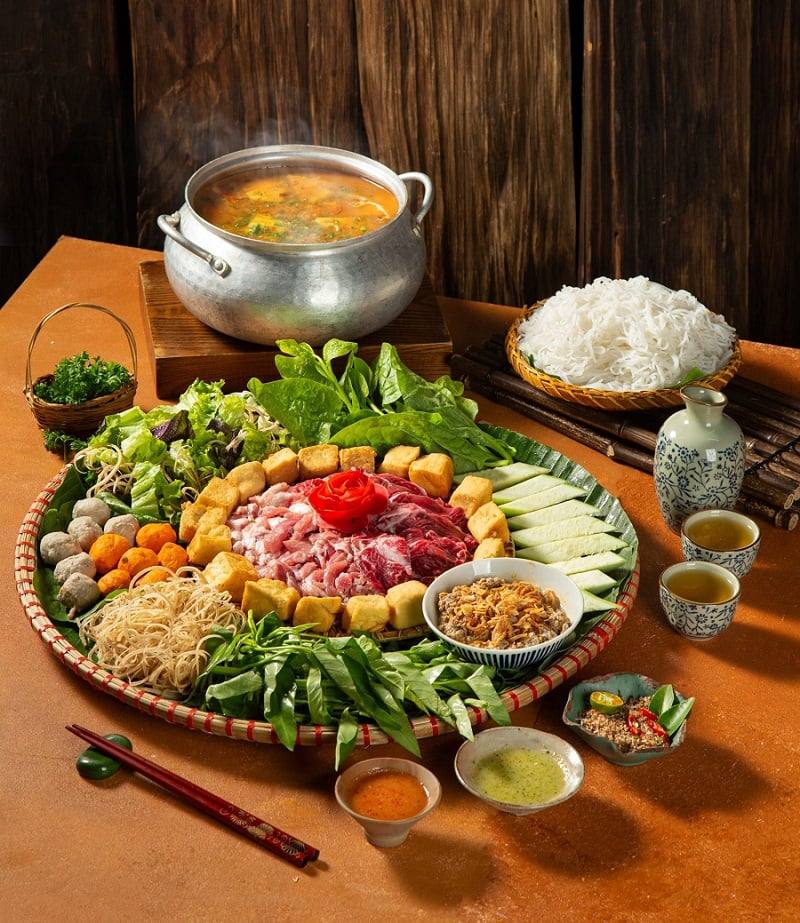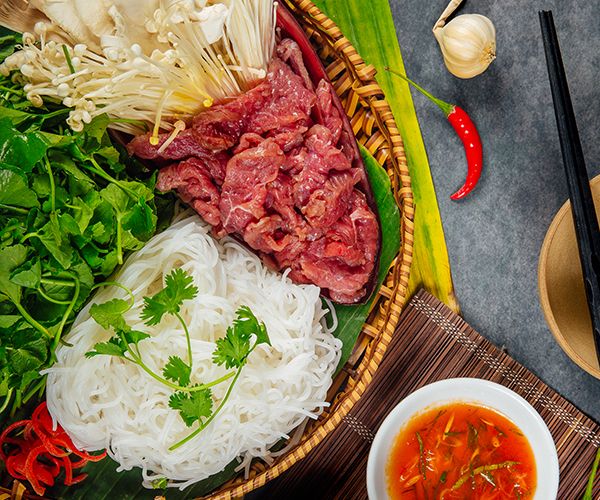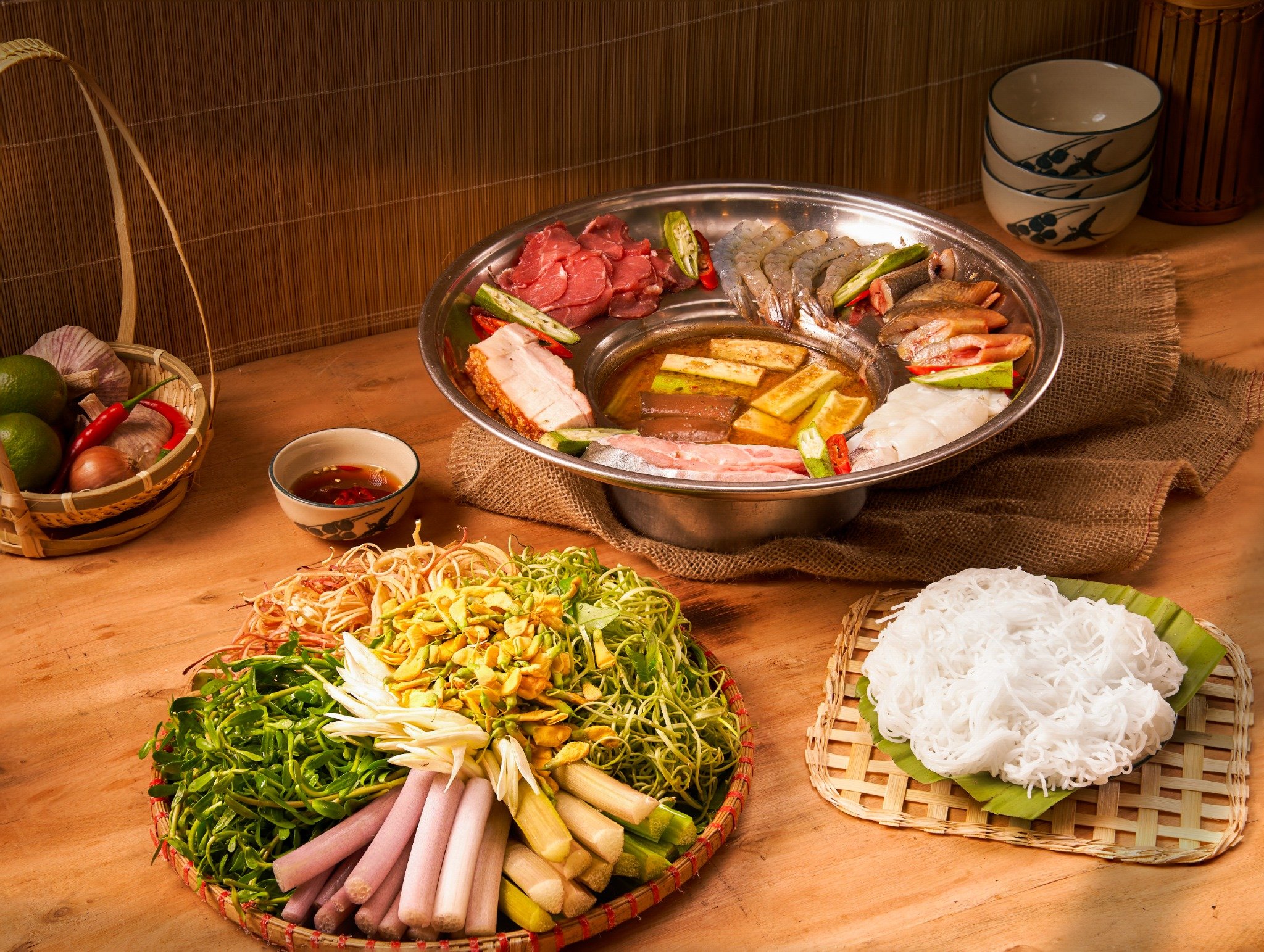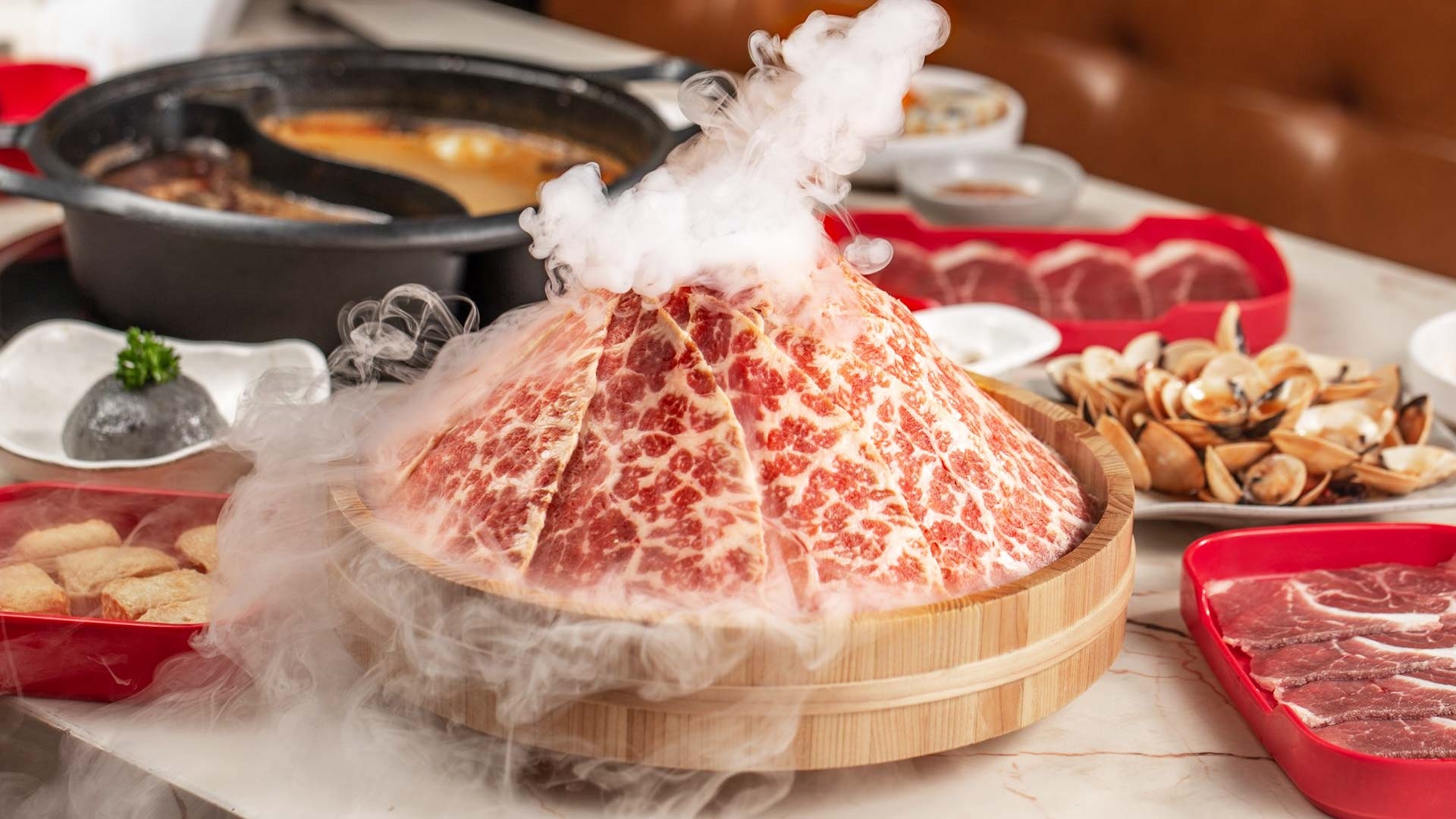
Traditional hotpot in Vietnam – must-try once in a lifetime
Vietnamese hotpot is more than just a meal; it’s a cultural experience that embodies the values of community, sharing, and the enjoyment of good food. This culinary tradition continues to evolve while maintaining its core essence, offering a delicious and satisfying experience for both locals and visitors alike.

Vietnamese Hotpot: A Culinary Exploration
Lẩu (Lau) is the Vietnamese term for hotpot, a quintessential culinary experience deeply ingrained in Vietnamese culture. It embodies a communal dining style, fostering social interaction and shared enjoyment. This provides a more organized and comprehensive overview of Vietnamese hotpot, covering its key components, regional variations, and cultural significance.
Core Components
Broth: The foundation of any Vietnamese hotpot lies in the broth.
- Varieties range from light and clear chicken or vegetable broths to richer, more flavorful options like Lau Tom Yum (inspired by Thai cuisine) with its spicy and tangy profile.
- Regional variations exist, with the Mekong Delta favoring broths made with fermented fish sauce (Lau Mam).
Ingredients: A diverse array of ingredients is typically included:
- Proteins: Beef, pork, chicken, seafood (shrimp, fish, squid), and tofu are common choices.
- Vegetables: A wide range of fresh vegetables, including leafy greens, mushrooms, and water spinach, add texture and nutrients.
- Noodles: Rice noodles, vermicelli, or other types of noodles are often added towards the end of cooking.
Dipping Sauces: A variety of dipping sauces enhance the flavors of the cooked ingredients.
- Popular choices include fish sauce, chili sauce, and peanut sauce, often customized with garlic, chili peppers, and lime juice.
Regional Variations
- Northern Vietnam: Focuses on lighter broths and a wider variety of fresh herbs and vegetables.
- Central Vietnam: Often incorporates influences from neighboring countries, resulting in spicier broths and the use of unique ingredients.
- Southern Vietnam: Known for its rich and flavorful broths, often utilizing coconut milk and featuring a strong influence from Mekong Delta cuisine.
Cultural Significance
- Social Gathering: Vietnamese hot pot is a social activity, bringing families and friends together to share a meal and conversation.
- Cultural Exchange: It reflects the diverse culinary influences that have shaped Vietnamese cuisine throughout history.
- Home Cooking Tradition: Many families have their own unique hot pot recipes passed down through generations.
See also:
Top 5 most must-try traditional Vietnamese hotpot
1. Lau Thai (Thai Hotpot)

- Key Features: Spicy and tangy broth, influenced by Thai flavors.
- Key Ingredients: Lemongrass, galangal, chili peppers, kaffir lime leaves, seafood (shrimp, fish), tofu, vegetables.
- Highlight: Vibrant flavors, perfect for those who enjoy spicy cuisine.
- Lowlight: Can be too spicy for some palates.
- Origin: Inspired by Thai Tom Yum soup.
- Price Range: Mid-range
2. Lau Bo (Beef Hotpot)

- Key Features: Simple yet flavorful broth, often with beef bones for extra richness.
- Key Ingredients: Thinly sliced beef, vegetables (mushrooms, spinach, water spinach), noodles.
- Highlight: Versatility – easy to customize with different types of beef and vegetables.
- Lowlight: Can be less visually appealing compared to some other hot pots.
- Origin: Widely popular throughout Vietnam.
- Price Range: Mid-range to high-end.
3. Lau Ca (Fish Hotpot)

- Key Features: Fresh fish is the star, often served whole or in fillets. Broth can be light or more intense depending on the fish used.
- Key Ingredients: Fish (various types), vegetables, herbs, sometimes with a touch of sourness.
- Highlight: Fresh, delicate flavors of the fish shine through.
- Lowlight: Can be more time-consuming to prepare due to the fish.
- Origin: Popular in coastal regions.
- Price Range: Mid-range to high-end (depending on the type of fish).
4. Lau Mam (Fermented Fish Sauce Hotpot)

- Key Features: Rich, pungent broth made with fermented fish sauce, offering a unique and intense flavor.
- Key Ingredients: Seafood, vegetables, herbs.
- Highlight: Bold and unique flavor profile, a true taste of the Mekong Delta.
- Lowlight: Strong flavor may not appeal to all palates.
- Origin: Mekong Delta region.
- Price Range: Mid-range to budget friendly.
5. Lau Tom Yum (Tom Yum Hotpot)

- Key Features: Spicy and sour broth, similar to Thai Tom Yum soup but with Vietnamese adaptations.
- Key Ingredients: Shrimp, mushrooms, lemongrass, tomatoes, chili peppers.
- Highlight: Refreshing and flavorful, a good balance of spicy and sour.
- Lowlight: Can be quite spicy, adjust chili levels accordingly.
- Origin: Influenced by Thai cuisine.
- Price Range: Mid-range.
Top 5 most must-try international Vietnamese hotpot
1. Haidilao Hotpot (China)
- Key Features: Renowned for exceptional service, extensive buffet, and unique entertainment (like noodle-making performances).
- Key Ingredients: Wide variety of meats, seafood, vegetables, and unique items like their signature “dancing noodles.”
- Highlight: Unparalleled dining experience with personalized service and a focus on customer satisfaction.
- Lowlight: Can be quite pricey.
- Origin: China
- Price Range: High-end
2. Kichi-Kichi (Japan)
- Key Features: Japanese-style hot pot with a conveyor belt system for easy ingredient selection, adding a fun and interactive element.
- Key Ingredients: Variety of meats, seafood, vegetables, and unique items like cheese tofu and crab balls.
- Highlight: Fun and engaging dining experience, good value for money.
- Lowlight: Can get crowded, especially during peak hours.
- Origin: Japan
- Price Range: Mid-range
3. MoMo Paradise (Japan)
- Key Features: Upscale Japanese shabu-shabu focusing on high-quality ingredients and personalized service.
- Key Ingredients: Premium meats, fresh seafood, and a wide selection of vegetables.
- Highlight: Refined dining experience with attentive service and emphasis on fresh, high-quality ingredients.
- Lowlight: Pricier compared to other options.
- Origin: Japan
- Price Range: High-end
4. Hot Pot Story

- Key Features: Offers a diverse range of Asian hot pot flavors, including Thai, Japanese, and Korean styles.
- Key Ingredients: Wide selection of meats, seafood, vegetables, and unique items depending on the chosen broth.
- Highlight: Opportunity to explore different Asian hot pot styles in one place.
- Lowlight: Menu can be overwhelming with the large number of choices.
- Origin: International concept
- Price Range: Mid-range
5. Hutong – Hot Pot Paradise
- Key Features: Known for its unique and flavorful broths, often with creative and innovative combinations.
- Key Ingredients: Wide selection of meats, seafood, vegetables, and often includes unique ingredients like specialty mushrooms or imported cheeses.
- Highlight: Focus on innovative flavors and a more upscale dining experience.
- Lowlight: Can be pricier compared to more casual hot pot restaurants.
- Origin: International chain
- Price Range: Mid-range to high-end
This list provides a starting point for exploring the exciting world of international hot pot in Vietnam. Remember to consider your budget and preferences when making your choice!
